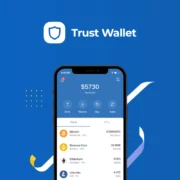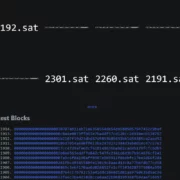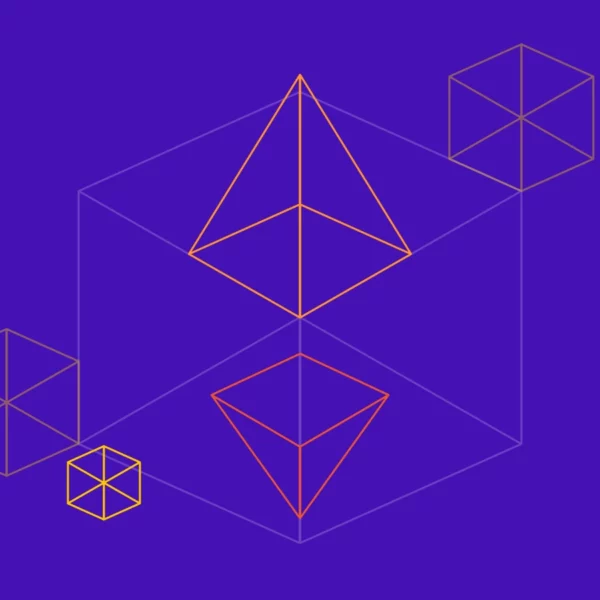
Klima DAO is a decentralized autonomous organization (DAO) and DeFi protocol that aims to combat climate change by using cryptocurrency to incentivize the reduction of greenhouse gas emissions. It generates tokenized carbon credits in the form of its native KLIMA token.
Carbon markets exist to sustainably minimize greenhouse gas emissions, establishing emission limits and financial tools representing carbon reductions.
Klima DAO incentivizes projects and entrepreneurs to make a profit while reducing their carbon footprint via its native KLIMA token, a carbon-backed, algorithmic currency
In this article, we’ll delve into the Klima DAO ecosystem, explore the benefits of the KLIMA token for unlocking the carbon economy, and much more.
Executive Summary
- Klima DAO is a collective of environmentalists, developers, and entrepreneurs who aim to pool their knowledge and expertise to drive change in the carbon markets today.
- Klima DAO is building an open-source, transparent community that will leverage the power of Web3 to deliver immediate and measurable climate-positive impact.
- Klima DAO is an evolving network coordinating climate finance delivery toward high-impact and validated sustainability projects that produce tangible environmental benefits.
What Is Klima DAO (KLIMA)?
Klima DAO is the center of a new green economy and describes itself as the DeFi that defies climate change. Built on the highly energy-efficient Polygon network, Klima DAO uses various technologies to accelerate the transfer of climate finance to sustainable development initiatives worldwide.
Klima DAO aims to create a sustainable economy that prioritizes the environment and reduces the impact of climate change. It uses blockchain technology and cryptocurrency to fund and manage projects that reduce carbon emissions. Klima DAO incentivizes businesses to cut their emissions by increasing the price of carbon assets. It aims to establish a market-based mechanism for reducing emissions by creating a transparent and accessible marketplace for carbon credits. The carbon credits are generated by projects funded by Klima DAO, such as renewable energy projects or reforestation initiatives.
The idea is that businesses will be more likely to invest in sustainable practices if the cost of emitting carbon is higher. A high price for carbon forces companies and economies to adapt more quickly to climate change realities, making low-carbon technologies and carbon-removal projects more profitable. By purchasing carbon credits from Klima DAO’s marketplace, companies can reduce their carbon footprint and contribute to a more sustainable future. As more businesses invest in sustainable practices and purchase carbon credits, the demand for these credits increases, leading to a higher price for carbon assets.
Klima DAO also operates as a decentralized platform where members can vote on proposals and fund climate initiatives.
Overall, Klima DAO is an innovative approach to addressing one of the most significant challenges facing humanity and has the potential to create a substantial impact in the fight against climate change by reducing greenhouse gas emissions through the purchase and retirement of carbon credits. The project aims to create a more sustainable future for all by leveraging the power of blockchain and decentralized governance.
Klima DAO encourages the creation of new Base Carbon Tonnes (BCT), a tokenized form of carbon credits, on the blockchain by utilizing the bonding mechanism invented by OHM to internalize carbon credits. Moreover, the tokenized carbon reduction platform aims to create a “new regenerative money system” through BCTs that brings transparency, liquidity, and infrastructure to the carbon economy. The project also plans to purchase the BCT carbon index token for KLIMA to store as many of them in its Treasury as possible.
Market participants can purchase BCT on an exchange and discount-bond them with KLIMA. They receive discounted KLIMA after five days and can sell it at a profit or stake on the protocol to increase their share of the KLIMA supply. Consequently, the project expects the price of BCTs to rise in tandem with the broader carbon market.
This process of getting protocol-owned liquidity is similar to the one introduced by Olympus DAO. In the case of Klima DAO, the price of KLIMA is supported by the BCT in its Treasury, which is further supported by real-world carbon emissions certificates.
The real-world cost of carbon emissions will directly affect how much BCT Klima’s protocol can absorb, putting market players under pressure to change or pay for increased carbon/greenhouse gas emissions.
KlimaDAO Founders
Klima DAO was founded by a group of “environmentalists, developers, and businesspeople” who have united their skills and knowledge to lower carbon emissions. The Klima team maintains an anonymous status, and the protocol is run as a decentralized autonomous organization by its community (as the name indicates).
Klima Dao’s open-source and transparent community leverages Web3 and blockchain technologies to establish a measurable climate-positive impact and provide climate funding to carbon offset projects that have been independently certified to benefit the environment
Although Klima DAO is not the official fork of Olympus DAO, numerous Olympus DAO contributors have made significant contributions to Klima DAO. Moreover, Olympus owns a small portion of KLIMA.
What Makes KlimaDAO Unique?
Using an Olympus-popularized DeFi idea to solve a real-world issue, Klima DAO represents a novel use case for blockchain systems. The protocol can reduce the supply of carbon offsets within the traditional carbon markets, directly affecting real-world prices, by boosting the KLIMA supply, backed by a Base Carbon Tonne (BCT).
The protocol emphasizes that finding a steady carbon price is not its primary objective. On the other hand, Klima DAO is conscious of the volatility-prone process it uses to withdraw carbon credits from the markets, a necessary trade-off for the stability it seeks to attain.
By projecting that a stable price will likely only be discovered by mid-century, Klima DAO stresses that the protocol’s goal is long-term success. However, with Klima DAO as a player, carbon markets are expected to improve transparency and liquidity.
Like Olympus DAO, market participants can grow their share of KLIMA by bonding and staking. With a current APY of nearly 40,000%, Klima DAO uses a similar rebase technique to Olympus.
Even though KLIMA trades at a significant premium to BCT’s treasury value, investors are encouraged to ignore price changes because the high yield is expected to surpass the ultimate price convergence between KLIMA and BCT.
Media sites that report on the carbon credit markets have already recognized Klima DAO’s effects. According to Carbon Pulse, in 2021, Klima DAO had already purchased 2% of the whole voluntary carbon market. The Australian Financial Review also pointed out that Klima DAO had already increased the floor price for carbon offsets.
What Is KlimaDAO (KLIMA) Token?
The native KLIMA token functions as a “floating algorithmic reserve currency backed by carbon offsets” and a rebase token.
The Klima DAO ecosystem’s guiding principle states that the Treasury will only produce a KLIMA token if at least one BCT is locked. Additionally, the Klima DAO ecosystem is essentially based on the carbon price because each BCT is backed by a carbon credit that guarantees the removal of one tonne of carbon.
As a result, the KLIMA token is a speculative asset that can be traded freely on the open market.
Decentralized, algorithm-based reserve money is what Klima aspires to achieve. The token, at a high level, contains four axioms:
Every KLIMA token has an Intrinsic Value (IV) backing the token
The Klima token has a minimum value, even though more assets may be backing it. As a result, the protocol’s pricing has a floor (base price) but no ceiling (max price). Currently, the intrinsic value is one carbon tonne; to put it another way, each KLIMA token is supported by 1 carbon tonne.
The KLIMA token can only be minted or burned by the protocol
With the power to increase and decrease the token’s supply, the protocol acts as the token’s “decentralized central bank.”
When KLIMA trades above the IV, the protocol will expand supply and sell KLIMA to the market
The protocol creates surplus reserves from the difference between the Intrinsic Value (IV) and market price since it can increase supply if the IV supports the token.
When KLIMA trades below IV, the protocol will buy and burn KLIMA, contracting the supply
The system increases reserves per KLIMA from the spread since it purchases the token below its intrinsic value.
According to these market operations, the protocol ensures that KLIMA doesn’t trade below its intrinsic value over the long run.
Due to the protocol’s ability and willingness to purchase KLIMA below the IV, even if the supply is zero, it gives consumers peace of mind and assurance that it will act as the last buyer of last resort. This situation benefits individuals who choose not to sell as their percentage supply increases.
How Many KlimaDAO (KLIMA) Coins Are There in Circulation?
KLIMA token’s maximum supply at any given time is capped at the number of tokenized carbon tonnes kept in the Treasury’s reserves since each KLIMA must be backed by at least 1 tonne of tokenized carbon offsets held in the Treasury. The ethos of the Klima DAO ecosystem stipulates that the treasure will only generate a KLIMA token if at least one BCT is blocked.
However, as more offsets are transferred to the Treasury through the redemption of bonds or pKLIMA (KLIMA derivative token given to stakeholders, advisors, core team, and the DAO), this amount could increase over time. Therefore, the practical cap on the number of tonnes that can be deposited into the Klima Treasury at any given time is the offset tonnage already bridged on-chain.
The actual limit on the total supply of KLIMA is the total number of outstanding verified carbon offsets, which, at the time of writing, is approximately 500 million tonnes. However, as new offsetting projects complete their verification and issuance processes, more offsets may be issued by registries like Verra.
As a result, the overall supply of KLIMA has no set upper limit; it can increase as long as new offsets are created, bridged, and bonded to the Treasury.
How Does KlimaDAO Work?
The Klima DAO ecosystem creates value for its community via significant economic growth. Three key incentives encourage continued engagement in the Klima DAO ecosystem, including staking, bonding, and rebasing. Let’s examine them below:
Bonding
Bonding is exchanging a piece of a liquidity pool for the Klima protocol. The protocol then lists the quantity of KLIMA tokens a user will receive in exchange, along with a discount rate and a vesting term. The quantity of the KLIMA token rises due to the Klima Treasury expanding its purchasing power beyond using BCT alone.
KLIMA Staking
KLIMA staking entitles participants to a distribution of earnings as a reward for holding KLIMA for an extended period. Users experience the rising cost of carbon due to it. The number of KLIMA tokens in a stake and the staking period determine the staking rewards. The compounding returns will be higher if more KLIMA tokens are locked up for extended periods.
KLIMA staking participants receive “sKLIMA” tokens in a 1:1 ratio for each KLIMA token in the Klima staking contract. The asset is largely illiquid because sKLIMA tokens aren’t listed on cryptocurrency exchanges. Nevertheless, sKLIMA can be moved across wallet addresses. Users may exchange their sKLIMA tokens for an equivalent number of KLIMA tokens after un-staking.
Rebasing
The Klima staking contract receives assets when users stake their KLIMA tokens. However, the protocol does not call for the return of these funds. As a result, the ratio of KLIMA tokens in the staking contract is higher than the total number of sKLIMA tokens still in circulation.
The protocol issues a rebase of the sKLIMA token to fix this difference and restore the proper balance. This also lessens interference with KLIMA staking. Additionally, the increase in the number of bonders or stakers on the platform causes expansions in the supply.
Staking Rewards
Extra KLIMA is awarded to KLIMA holders through Klima DAO’s staking incentives, in every epoch. The Klima DAO treasury builds up the surplus reserves from the sale of bonds. KLIMA staking rewards are paid out as sKLIMA from a percentage of the excess reserves.
The governance of Klima DAO determines the staking rewards’ rates. The reward rate a user receives for staking KLIMA is the same as the reward rate for staking Klima DAO as a percentage of the staked circulating supply.
KLIMA is created and distributed when customers bond assets to Klima DAO. In addition to the KLIMA produced for the bonder, an additional 30% of the bond’s value is produced for the DAO wallet to support operations. If a user bonds assets worth 10 KLIMA, the bonder will receive 10, and the DAO 3 KLIMA.
Toucan Carbon Bridge
Klima DAO’s base carbon tonne (BCT) serves as its reserve asset. A basket of different carbon tonnes, including TCO2 tokens that can represent carbon offsets from different initiatives in various fields and geographies, is represented by a BCT, a carbon offset index token. The Toucan Carbon Bridge allows projects to purchase individual carbon offsets, represented by TCO2 units, on the blockchain. Each offset token represents a tonne of carbon dioxide emissions avoided through verifiable eco-friendly projects.
Bottom Line
Finance and coordination are issues related to climate change. Even though viable alternative energy sources are available for producing energy and goods, hundreds of billions of dollars are still invested in oil and gas annually. Klima DAO utilizes blockchain technology to generate tokenized carbon credits, which helps overcome the organizational and financial obstacles that can impede the implementation of carbon reduction projects, thus promoting the development of a carbon economy.
By bridging Web3 and conventional carbon offset markets, Klima DAO enables funds to flow towards high-impact carbon reduction initiatives that directly impact our global carbon budgets.
Klima DAO aims to efficiently plan and execute impactful sustainability initiatives, promote standardization of best practices across the DeFi sector, and expand a network of technical experts to accelerate action.






